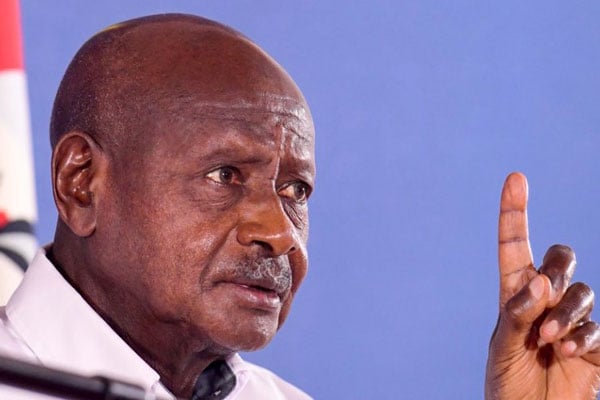Prime
How to best eat Karamoja iron sheets and goats

Author: Charles Onyango Obbo. PHOTO/FILE
What you need to know:
- All relief funds and goods have been stolen, including the 2018 scandal where Ugandan officials inflated refugee numbers by 300,000 and swindled millions of dollars, up to the 2020/2021 Covid-19 funds and goods.
The big men and women have been in the news for weeks for stealing iron sheets, goats and maize meant for the vulnerable in long-suffering Karamoja.
Last Thursday Daily Monitor, in its story “Iron sheets: Who said what as Museveni grilled ministers”, reported about an angry President Yoweri Museveni, tearing into the ministers implicated in the iron sheets scandal and demanding scalps.
The interesting thing is that the questions Museveni was asking, he had asked many times before, beginning shortly after he and the NRA/M took power in 1986. The first action of the NRM government was the establishment of the Luweero Fund for the rehabilitation of the war-ravaged region where the NRA rebels based their five-year armed struggle.
The fund, which was managed by the office of Prime Minister Dr Samson Kisekka, grew to Sh68 billion then. It was stolen. A probe found there had been an abuse of the Luweero Fund, though it stopped short of blaming Kisekka personally.
Therefore, this history of corruption in relief funds is as old as the NRM’s rule. The Luweero fund, which dominated headlines more than the Karamoja iron sheets are doing today, was the original sin. It tells us that if the funds for Luweero, at that time a very emotional political issue, could be stolen, the iron sheets and goats meant for marginal Karamoja are easy pickings.
All relief funds and goods have been stolen, including the 2018 scandal where Ugandan officials inflated refugee numbers by 300,000 and swindled millions of dollars, up to the 2020/2021 Covid-19 funds and goods.
The one area where there has been a notable change is in Defence. There was a time when procurement scandals in the army, with junk fighter helicopters, expired rations, and baby-size uniforms and boots were the fodder of daily news.
There are still scandals in the army, for example in the theft of salaries of soldiers serving in the peacekeeping mission in Somalia, but better discipline in the military means there are fewer leaks of abuse, but also it seems the UPDF’s debacle in the eastern Democratic Republic of Congo between 1999 and 2000, and its status as a first mover to deploy troops to Somalia under the African Union Mission in Somalia in 2007, led to a wide-ranging reform of the military to make it more effective in the face of formidable adversaries in the new geopolitical theatres where it plays. This, as this column noted some years back, was evident in Somalia, where the UPDF functioned at a level years ahead of the crude weapon of political repression it often is at home, especially during elections.
Having largely gotten on top of corruption in the military, it seems there are no incentives to do the same in other sectors. The reason is that the regime achieves some level of internal stabilisation through the corruption we see with Karamoja goats and maize.
There are concentric circles of eating in Uganda. At the centre is the most lucrative Circle A, with close links to the State House. This is where you find your Lubowa Hospitals, big dams, Uganda Airlines, major highways, and the granting of coffee monopolies. The projects here cost over Sh100 billion. About 85 percent of them are usually delivered because they often have high national security or regional cooperation implications, though the costs are hugely inflated.
The next Circle B is of projects between Shs25 billion and Shs100 billion and includes office buildings (especially by parastatals), refugee goods and money, Covid funds, election materials, etc. Circle A allows corruption in Circle B as a form of a bargain, to keep the peace.
Because Circle A and Circle B have had their share, they allow Circle C also to get its cut. Here the deals are usually between Shs850 million and Shs 25 billion. This is where state universities, minor roads, schools, medicine, and Karamoja iron sheets and goats fall.
Circle D eats between Shs175 million and Shs850 million. This is usually up-country, in the districts and counties. With Circle E, now we are in the parishes and lower down, where the eating is between Sh1 million and Sh175 million (the Parish Development Model fund, Emyooga etc.).
A lot of questions have been asked about the criteria for allocating the iron sheets. And that is the mistake they made. First, you have to sequence right. You can’t eat the iron sheets, goats, and cows together. Criteria are really about the narrative. What story do you tell?
They could have established something called “champions of development”, who get the iron sheets to demonstrate to the Karamojong how best to use them. We wouldn’t be debating iron sheets and goats if they had done that. We would be arguing about the qualification for being a champion of development.
Mr Onyango-Obbo is a journalist, writer and curator of the “Wall of Great Africans”.
Twitter: @cobbo3





